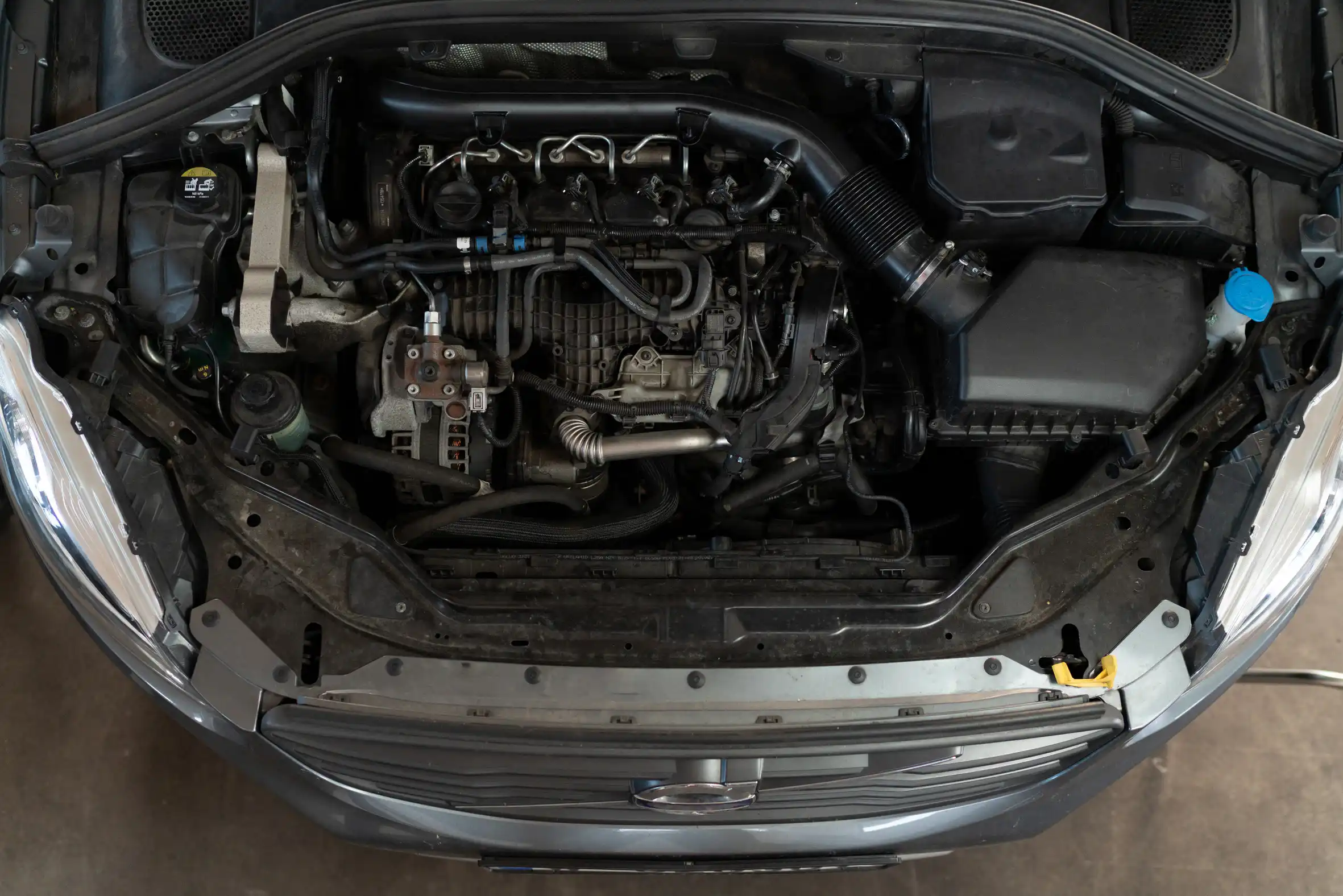A mechanic’s tool set is like a DJ’s headphones or a barber’s scissors—impossible to do the job without. And while the different tools needed vary from job to job, some tools are generally handier than others to have around. While it is by no means exhaustive, here is a list of crucial top tools that car mechanics (of both the home and professional variety) can pretty much always make use of.
Wobble Extensions
Wobble extensions are utilized by auto mechanics as attachments between the socket wrench and the socket, offering an angle of flexibility. These tools enhance accessibility, particularly in automotive repair scenarios where nuts and bolts are located in awkward or hard-to-reach places. The unique design of wobble extensions allows the connected socket to “wobble” or pivot up to 15 degrees off-center, enabling mechanics to engage fasteners at an angle, which can be quite advantageous when dealing with obstructions or limited clearance around the fastener.
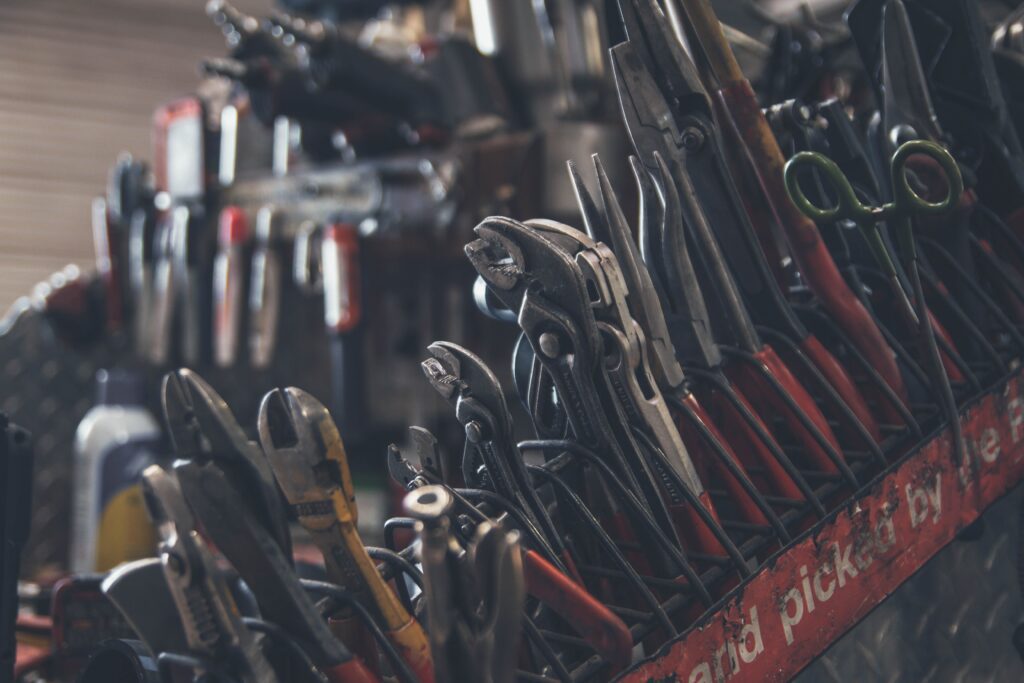
By providing this extra degree of maneuverability, wobble extensions help mechanics to effectively loosen or tighten fasteners in constrained spaces without having to remove surrounding components or equipment, saving time and effort. These tools are especially beneficial in the complex and densely packed environments found in modern vehicle engine compartments, allowing mechanics to perform tasks more efficiently and with less hassle.
Air Hammer
An air hammer, also known as an air chisel, is a versatile pneumatic power tool used by mechanics for various applications. Mechanics use air hammers to cut into or through metals, chisel away rusted parts or old paint, and to remove or install rivets and fasteners, among other tasks. This tool is particularly useful for jobs that require more power and precision than manual hammering or chiseling could provide, such as removing stubborn components or shaping materials. In auto repair, mechanics frequently use air hammers for tasks like separating ball joints, bushings, and other tightly fitted or corroded parts in a vehicle’s suspension or exhaust system. The air hammer’s ability to deliver powerful, consistent, and rapid blows allows mechanics to perform these tasks more efficiently and effectively compared to using manual tools.
Ear/Eye Safety
Eye protection is indispensable due to the constant exposure to harmful substances such as oil, grease, and various chemicals, as well as small particles like dust and metal shavings. Safety goggles and face shields safeguard the mechanics’ vision, preventing foreign objects from causing injuries, infections, or any form of visual impairment. Ear protection is equally important as mechanics frequently find themselves in noisy environments due to the operation of heavy machinery, power tools, and the general clamor found in automotive workshops. Proper ear protection, such as earmuffs or earplugs, helps in preventing noise-induced hearing loss and other auditory complications, ensuring that mechanics maintain their hearing health.
Nose Pliers
Nose pliers, often referred to as needle-nose pliers, are a staple in an auto mechanic’s toolbox. Mechanics use them primarily for their precision in gripping, bending, and cutting small objects or reaching into tight spaces where fingers or bulkier tools can’t easily access. In automotive repair, these pliers are invaluable in handling clips, wires, and other small components, as well as manipulating or holding parts in place during assembly or disassembly. For instance, when dealing with electrical wiring, nose pliers enable mechanics to grip, twist, or cut wires with precision. They are also used to remove or install small fasteners, retrieve dropped parts from narrow spots, and hold or align parts during assembly. Their long, tapered, and pointed jaws provide the dexterity needed in various applications, making them versatile tools in auto repair and maintenance.
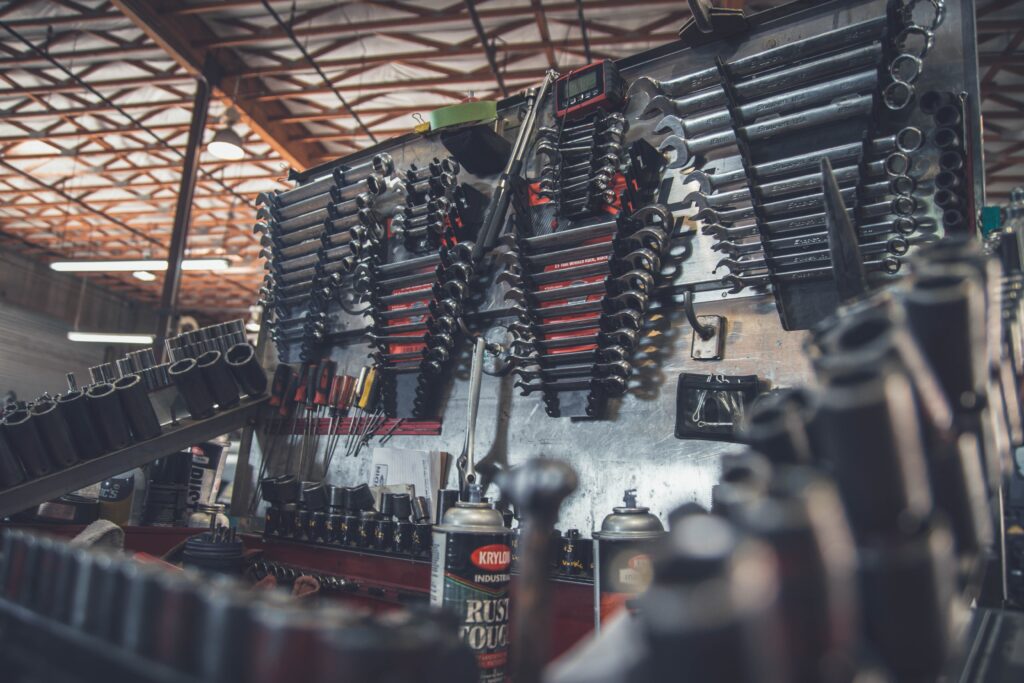
Sockets/Ratchets
Sockets and ratchets are fundamental tools for auto mechanics, essential for loosening and tightening various nuts and bolts during vehicle repair and maintenance. A ratchet, paired with an appropriate-sized socket, allows a mechanic to turn a bolt or nut by moving the handle back and forth without removing the socket from the fastener, making the task quicker and more efficient. This set is widely used in various areas, such as engine repair, tire replacement, and bodywork, to name just a few. Their use simplifies the process of dismantling components during repair works, such as removing wheels, engine parts, or body panels, and aids in the reassembly process, ensuring that each part is securely fastened. Different sizes and types of sockets and ratchets including metric and SAE ensure that the mechanic can work with different sizes and types of fasteners, contributing to the versatility and adaptability of these tools in automotive repair tasks.
Breaker Bars and Torque Wrenches
Breaker bars and torque wrenches are specialized tools used by auto mechanics for specific purposes in vehicle repair and maintenance. A breaker bar is a long, non-ratcheting bar that provides extra leverage to manually loosen stubborn or tightly torqued nuts and bolts. Mechanics often use breaker bars in situations where a lot of force is required, such as loosening lug nuts on wheels or other highly torqued engine components.
A torque wrench, on the other hand, is a precision tool used to tighten nuts and bolts to a specific torque value, ensuring that the fasteners are neither too loose nor too tight. This is crucial in engine assembly and other sensitive parts of a vehicle where proper torque is necessary to maintain the integrity and functionality of components. Torque wrenches allow mechanics to apply a precise level of force to fasteners, providing accuracy and consistency in the assembly process, which is essential for the reliability and safety of the vehicle.
So, in essence, breaker bars are mainly used for loosening, and torque wrenches are used for precise tightening to manufacturer specifications in various automotive repair and maintenance tasks.

Pry-Bars, Picks, Files
Auto mechanics use pry bars, picks, and files in their work to handle, manipulate, or refine parts and components during vehicle repair and maintenance processes. Pry bars are typically used to separate or move parts that are tightly fitted together. They help in tasks like removing engine components, prying off covers, or separating suspension components, where a considerable amount of force or leverage is required.
Picks come in handy for more delicate or precise tasks. Mechanics use them to remove o-rings, gaskets, or seals and to position or align small components. Picks can also be useful in removing debris or obstructions from narrow or recessed areas.
Files are used by mechanics to smooth, shape, or clean metal parts. When parts have rough edges, burrs, or minor imperfections that could hinder fitment or operation, a file helps refine the surface. Files are also used to clean or refurbish components, like removing rust or corrosion, making them fit for reuse.
Each of these tools, despite being simple, plays a crucial role in facilitating various aspects of vehicle repair and maintenance, allowing the mechanic to work efficiently and effectively.
Drill/Driver Sets
Auto mechanics use drills and driver sets for various tasks in vehicle repair and maintenance that involve creating holes, fastening, and unfastening screws and bolts. Drills are utilized to bore holes into materials like metal, plastic, or other automotive components, either to facilitate repairs or to install new parts. Drills help mechanics in customizing or modifying parts to ensure proper fitment and functionality.
Driver sets, including different types of bits such as flathead, Phillips, and Torx, are used with drills or screwdrivers to tighten or loosen screws and bolts. They enable mechanics to work with various fastener types found in vehicles, ensuring that they can effectively disassemble and reassemble components during repair works. Drill sets, with their array of bits and adaptors, allow mechanics to perform precise and efficient drilling, screwing, and boring operations on vehicles. They are instrumental in facilitating the removal of damaged screws, the installation of new parts, and making necessary modifications or adjustments to vehicle components.
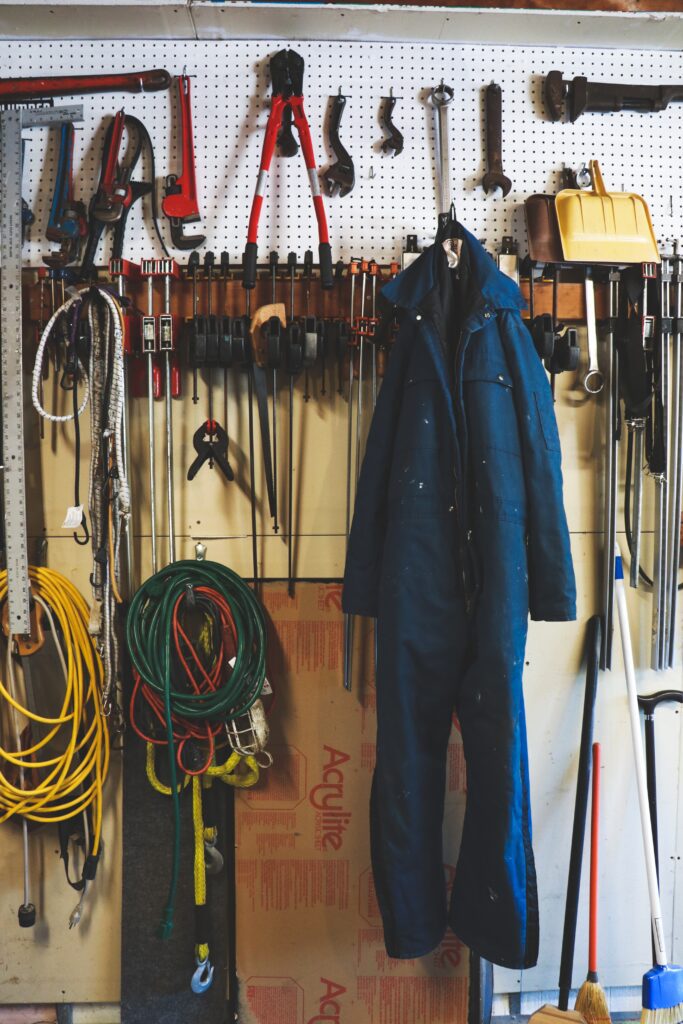
Having a versatile set of drivers is crucial as automobiles comprise a multitude of fasteners, each requiring a specific type of bit for proper engagement. Combined with power drills, driver sets allow mechanics to expedite the process of removing and installing fasteners, making their work more efficient and less physically demanding. These tools are indispensable for tasks ranging from simple fixture adjustments to complex component installations or modifications.
Wiring Tools
Auto mechanics utilize wiring tools in dealing with the electrical components and wiring systems of a vehicle. Wiring tools such as wire strippers, crimpers, and circuit testers play crucial roles in repairing, replacing, or installing electrical parts like sensors, lights, and stereo systems. Mechanics use wire strippers to remove insulation from electrical wires without damaging the internal conductors, ensuring that electrical connections are effective and safe. Crimpers are used to secure connectors and terminals to wires, essential for establishing reliable electrical connections.
Circuit testers and multimeters help mechanics diagnose electrical problems, allowing them to test for voltage, continuity, and resistance in electrical circuits. These tools are instrumental in troubleshooting issues with various electrical systems such as batteries, alternators, and ignition systems, helping to find and repair electrical faults.
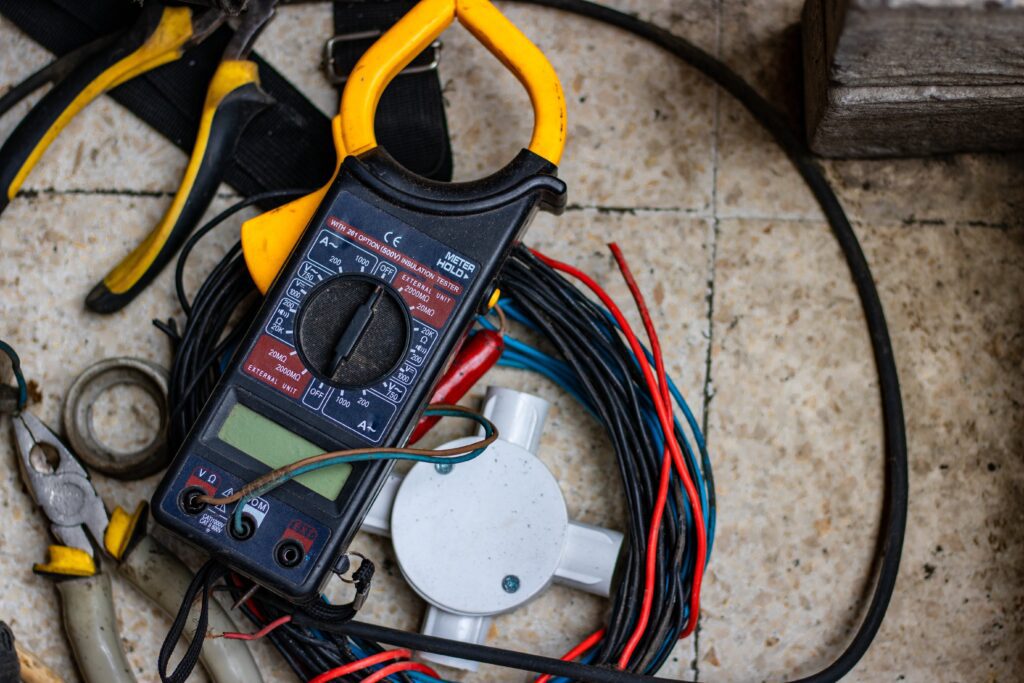
Using specialized wiring tools, mechanics can ensure that electrical repairs and installations are done accurately, safely, and reliably, maintaining the proper function of the vehicle’s electrical systems and components. These tools are fundamental for tasks related to automotive electrical systems, enabling mechanics to perform necessary repairs and maintenance effectively.
Shop Towels
Shop towels are used by auto mechanics as an essential part of maintaining cleanliness and ensuring that work is carried out efficiently and safely in a garage or workshop environment. Mechanics use these towels for wiping off excess oil, grease, and other fluids from vehicle parts and surfaces during maintenance and repair tasks. They also use them to clean their hands and tools, helping to prevent the transfer of dirt and contaminants from one part of the vehicle to another. Shop towels also assist in containing spills and leaks that could create slippery and hazardous conditions in the workspace. Additionally, they are used to cover or protect sensitive parts of the vehicle, such as electronics and upholstery, from dust, dirt, and spills during repairs. In essence, shop towels play a vital role in maintaining a tidy work environment and ensuring that mechanical repairs and maintenance are carried out with a high degree of precision and care.
